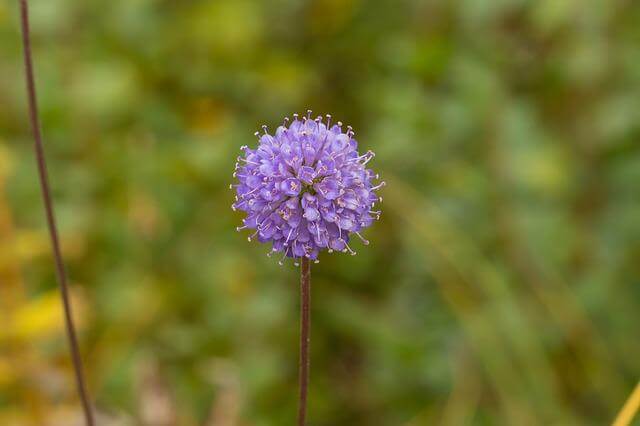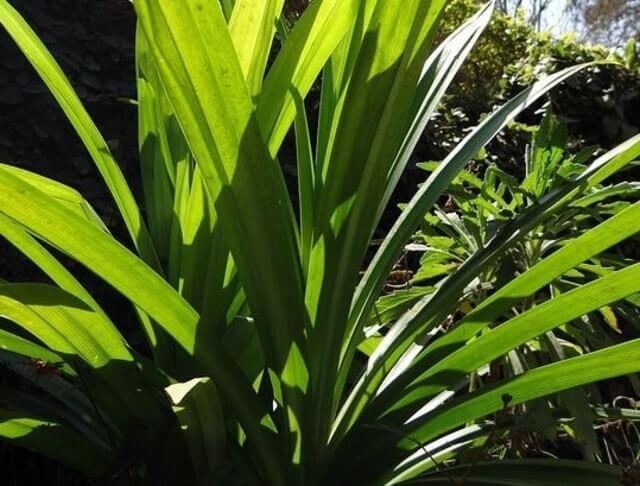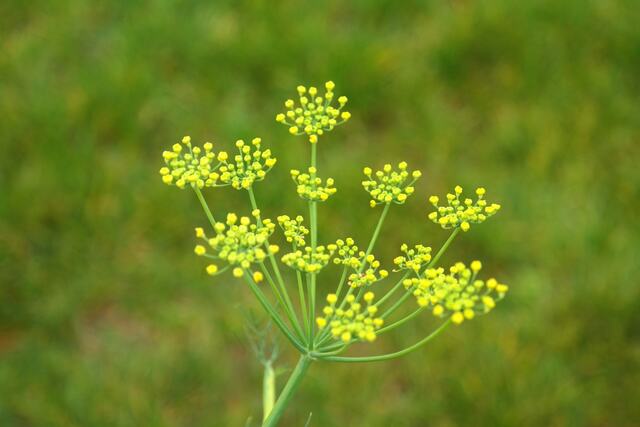11 Herbs And Spices That Start With F
When cooking, many people like to add herbs and spices to their dishes. In this article, we list 15 Herbs And Spices That Start With F that are popular in different parts of the world.
If you’re taking medication or have an allergy, it’s important to consult your doctor before adding any new herbs or spices to your diet.
Herbs And Spices That Start With F
False Unicorn (Chamaelirium luteum)

The false unicorn plant (Chamaelirium luteum) is a flowering perennial herb found in eastern and central North America. The plant has narrow, lance-shaped leaves and produces small, blue to pinkish-purple flowers in late spring or early summer.
False unicorn root has been used for centuries by Native Americans and herbalists to treat a variety of health conditions, including: kidney stones, urinary tract infections, constipation, and arthritis.
The root is also thought to be a natural remedy for menopause symptoms. False unicorn is considered a safe herb when used properly, but there are some potential dangers associated with its use.
Fennel (Foeniculum vulgare)
Fennel is a flowering plant in the carrot family Apiaceae, often used as a herb. It is a perennial, growing to 2 m tall, with feathery leaves 1.5-3 m long and 2-6 cm broad. The yellow flowers are produced in terminal umbels 5-15 cm wide, each flower small, yellow and fragrant.
The fruit is a dry seed from 4-10 mm long and 1-3 mm wide, containing two mericarps. Fennel is native to the Mediterranean region and has been cultivated there for more than 3,000 years.
It is widely used in European cuisine. Fennel seeds are sometimes confused with those of aniseed, which belong to a different species (Pimpinella anisum).
Related Post: How to Grow Fennel from Seed (Easy Growers Guide)
Fenugreek (Trigonella foenum-graecum)

Fenugreek is an annual plant that is a member of the Fabaceae family. The fenugreek plant has leaves that are feathery and fern-like. The plant produces pods that are filled with small, yellow seeds. Fenugreek has a long history of use in both food and medicine. The plant is native to the Mediterranean region, but it can now be found worldwide.
The primary uses for fenugreek are as a spice and as a medicinal herb. The seeds are often used in Indian cuisine, where they are ground into a powder and used to flavor curries and other dishes.
Fenugreek is also used to make a type of pickle called hari chutney. As a medicinal herb, fenugreek is most commonly used to treat digestive problems such as gas and indigestion.
Feverfew (Tanacetum parthenium)
Feverfew is a small, daisy-like flower that is often found in the wild. It has been used for centuries to treat fever, headaches, and other ailments. The plant can be dried and used in teas, or the leaves can be crushed and applied to the skin. Feverfew is also available in capsule form.
The active ingredient in feverfew is parthenolide. This compound is thought to help reduce inflammation and pain. Feverfew is also a good source of vitamins A and C, as well as minerals such as zinc and magnesium. Feverfew has been shown to be effective in treating migraines, arthritis, and other inflammatory conditions.
It can also be helpful in reducing the symptoms of asthma and allergies. There are some dangers associated with taking feverfew. It can interact with other medications, so it is important to talk to your doctor before taking it. Feverfew can also cause an allergic reaction in some people.
Related Post: How To Grow Feverfew From Seed? Simple Method!
Fo-ti (Fallopia multiflora)
The Fo-ti (Polygonum multiflorum) plant is a Chinese herb that has been used for centuries to treat a variety of health conditions. The plant is also known by other names, such as He Shou Wu, Chinese Knotweed, and Polygonum multiflorum.
The Fo-ti plant is a perennial vine that grows in damp areas, such as marshes and riverbanks. The leaves are green and heart-shaped, while the flowers are small and white. The root of the Fo-ti plant is the part that is used medicinally.
The Fo-ti root contains a number of beneficial compounds, including anthraquinones, saponins, tannins, and polysaccharides. These compounds are believed to be responsible for the plant’s therapeutic effects. There are also dangers associated with Fo-ti use, including adverse reactions and interactions with other medications.
Frankincense (Boswellia)
Frankincense is an aromatic resin that is derived from the Boswellia tree. The tree grows in arid climates, such as in India, Africa and the Middle East.
The sap from the Boswellia tree is tapped, and the resin is then dried. Frankincense has a sweet, woodsy fragrance and is used in aromatherapy and incense.
It has a host of medicinal benefits, including reducing inflammation, treating respiratory problems and boosting the immune system. However, frankincense should not be taken internally by pregnant women or those with liver disease.
Spices That Start With F
French Jasmine (Jasminum grandiflorum)
The French perfume jasmine, Jasminum grandiflorum, is a beautiful evergreen vine that can be grown either indoors or outdoors. It has white flowers that release a strong, sweet fragrance. This plant is native to the Mediterranean region, but can be grown in other warm climates.
It is used for perfume, aromatherapy, and in folk medicine.Jasmine is also used in traditional medicine to treat a variety of illnesses.
It can be hazardous in high doses. This plant is considered a sacred plant in India and is often used in wedding ceremonies. Jasmine is also known to be a symbol of love and happiness.
Fragrant Pandan (Pandanus amaryllifolius)

The Fragrant Pandan (Pandanus amaryllifolius) is an evergreen plant that is a member of the Pandanus genus. This plant is native to Southeast Asia and parts of Australia. The Fragrant Pandan has long, blade-like leaves that are dark green and have a waxy texture.
This plant produces fragrant white flowers that grow in clusters. The Fragrant Pandan can be grown indoors or outdoors in tropical or subtropical climates. This plant is used for landscaping, as well as for cooking and medicinal purposes. The Fragrant Pandan is a popular ingredient in Southeast Asian cuisine.
This plant is also used to make traditional medicine remedies. The Fragrant Pandan contains antioxidants and anti-inflammatory compounds that may offer health benefits. However, there are some dangers associated with this plant.
Fingerroot (Boesenbergia rotunda)
The fingerroot plant, also known as Boesenbergia rotunda, is a medicinal herb that has been used in traditional Chinese medicine for centuries. The plant is mostly native to India, but also found in Southern Asia. It is a perennial plant that grows to a height of about 2 feet. The leaves are heart-shaped, and the flowers are small and white.
The root of the plant is the part that is used medicinally.Fingerroot has a number of medicinal uses. It is an effective treatment for digestive problems such as indigestion, constipation and diarrhea.
It can also be used to treat fever, coughs and colds, and other respiratory infections. Fingerroot is also believed to have anti-inflammatory properties and can be used to treat arthritis and other joint pain.
Fragrant olive (Osmanthus fragrans)
The fragrant olive plant (Osmanthus fragrans) is a small evergreen tree or shrub that belongs to the Oleaceae family. It is native to China, but it can also be found in other parts of the world. This plant has dark green leaves and white flowers that have a sweet fragrance.
The flowers are used to make tea, and the leaves are used to make medicine. Fragrant olive is used for a variety of purposes, including: treating diabetes, improving heart health, reducing stress levels, and fighting infection.
However, there are also some dangers associated with this plant. For example, it can be toxic if consumed in large quantities.
Fever Grass (Cymbopogon citratus)
Fever Grass (aka Cymbopogon citratus) is a grassy plant that is found in tropical and subtropical regions all over the world. It has long been used as a medicinal herb, and recent research has shown that there are many potential benefits to using Fever Grass.
Some key uses and benefits of Fever Grass include its ability to help reduce inflammation, treat respiratory problems, boost the immune system, and improve digestion. While Fever Grass is generally considered safe and beneficial, there are a few potential dangers associated with its use.
It is important to consult with a healthcare professional before starting any new herbal therapy, especially if you are pregnant or have any other health concerns.
Related Post:












